As electromechanical actuators and other mechanical motion components expand in capability for heavy duty applications, so does their capability to resist harsh conditions. Extreme temperatures, high particulate levels, chemical exposure, high-pressure washdowns, vibration and shock, radiation, and electromagnetic interference are among the present threats to reliable motion control. System designers can mitigate these threats when selecting motion control components for such applications through careful evaluation of the following five design elements that contribute to robust operation: material selection, coatings, sealing strategy, vibration/shock resistance and maintainability.
Factor One: Material Selection
Material selection is the first line of defense against challenging environmental conditions. Material science is advancing steadily to create new alloys and hybrid materials that can withstand temperature extremes, exposure to chemicals or abrasive materials, frequent washdown, and other environmental forces. Stainless steel, hard-anodized aluminum and resistant polymers are among the most popularly deployed materials used to ruggedize motion control components.
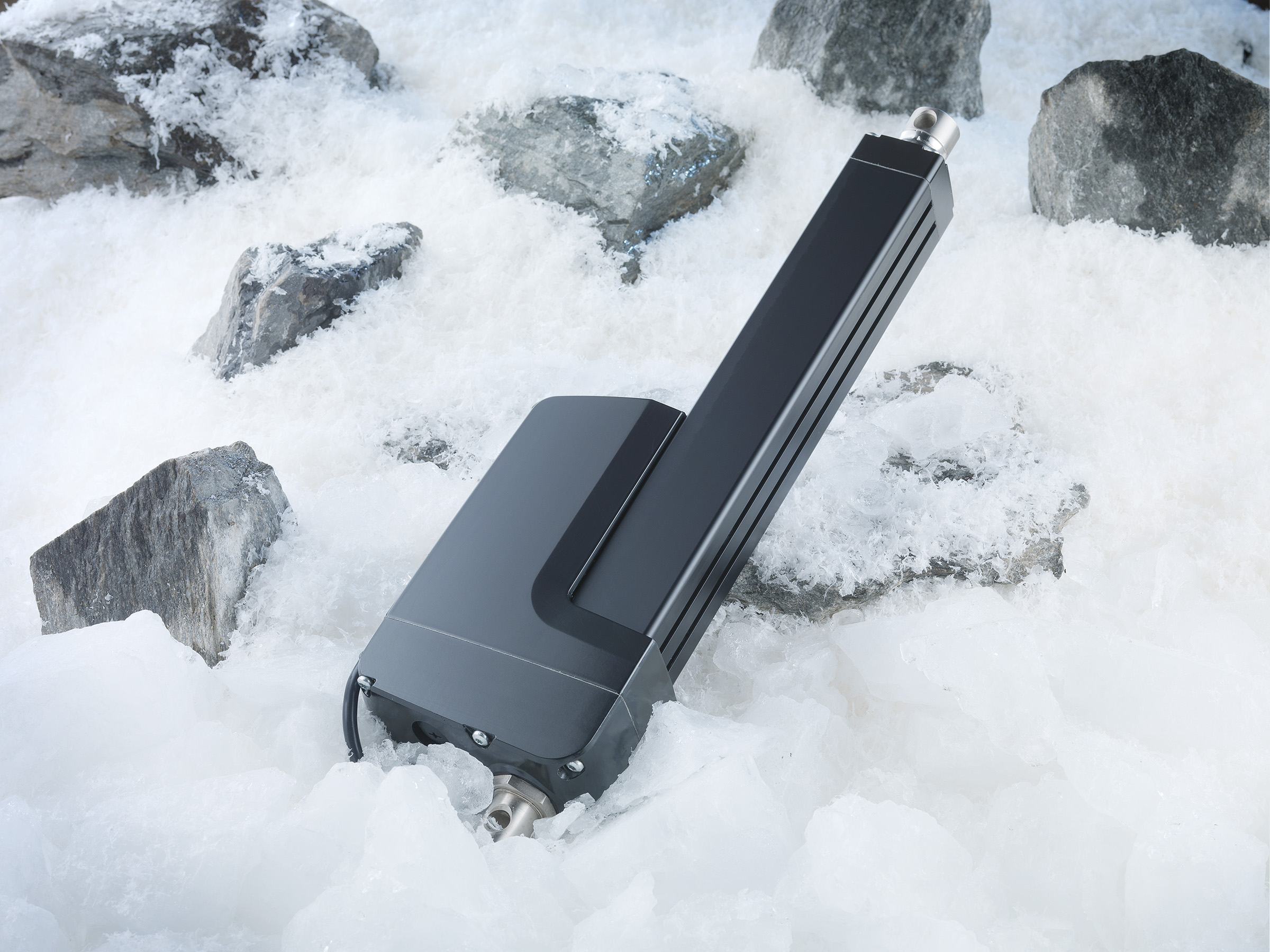
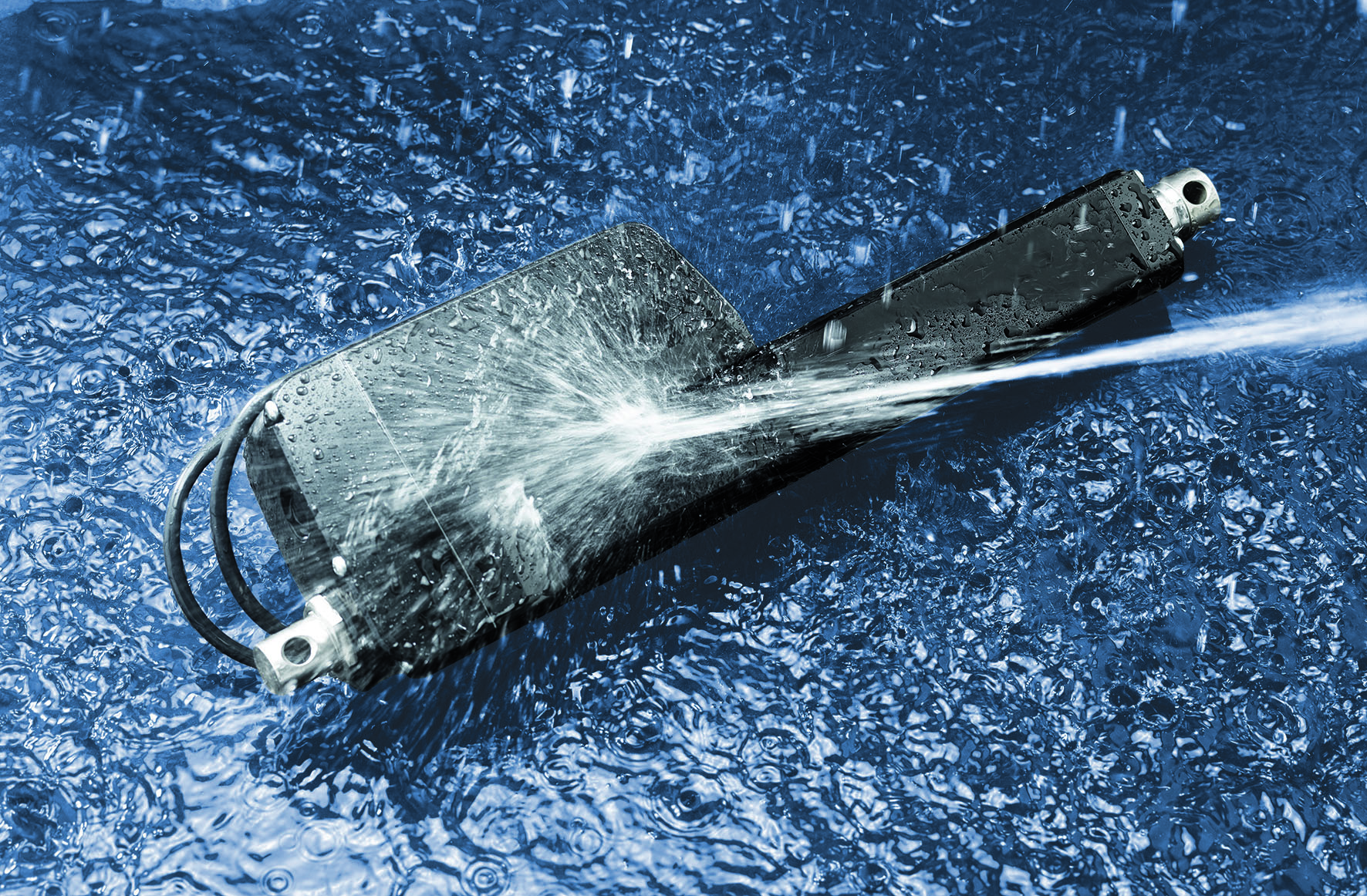
Electromechanical actuators are now designed to withstand challenging conditions
Poor material selection will result in premature failures, expensive in-field service and repair, and lost productivity. Maximum protection comes when all motion control components - from the actuator housing to the smallest bearing - are selected with worst case operating scenarios in mind.
Factor Two: Coatings
Motion control components used in extremely corrosive environments, such as those characterized by exposure to hydrocarbons, urea and fertilizers, should also be coated with high-performance materials. This improves operation and reduces downtime, especially in environments where corrosive chemicals, salt spray or submersion will require additional protection. The right coating and material combination can extend component life 200-fold.
Testing chemical resistance
The most widely applied standard for chemical resistance is ISO 15003, which provides design requirements and guidance for the manufacturers of electrical and electronic equipment used in mobile agricultural machinery, forestry machinery, landscaping and gardening machinery. It provides test protocols for specific environmental conditions and defines severity levels for extreme environmental conditions that might occur during typical operations. Testing for chemical resistance, for example, requires the ability to withstand three days of operation amidst the following chemical concentrations:
- Diesel Fuel – 100%
- Hydraulic Oil – 100% • Brake Oil – 100%
- Ethylene Glycol – 50% aqueous solution
- Urea Nitrogen – saturated solution
- NPK Fertilizer*9 (7.5% each N, P, K) – saturated solution
Other standards applied to corrosion resistance, particularly Diesel Exhaust Fluid (DEF) are DIN 70070-05, AUS 32 and ISO 22241-1.
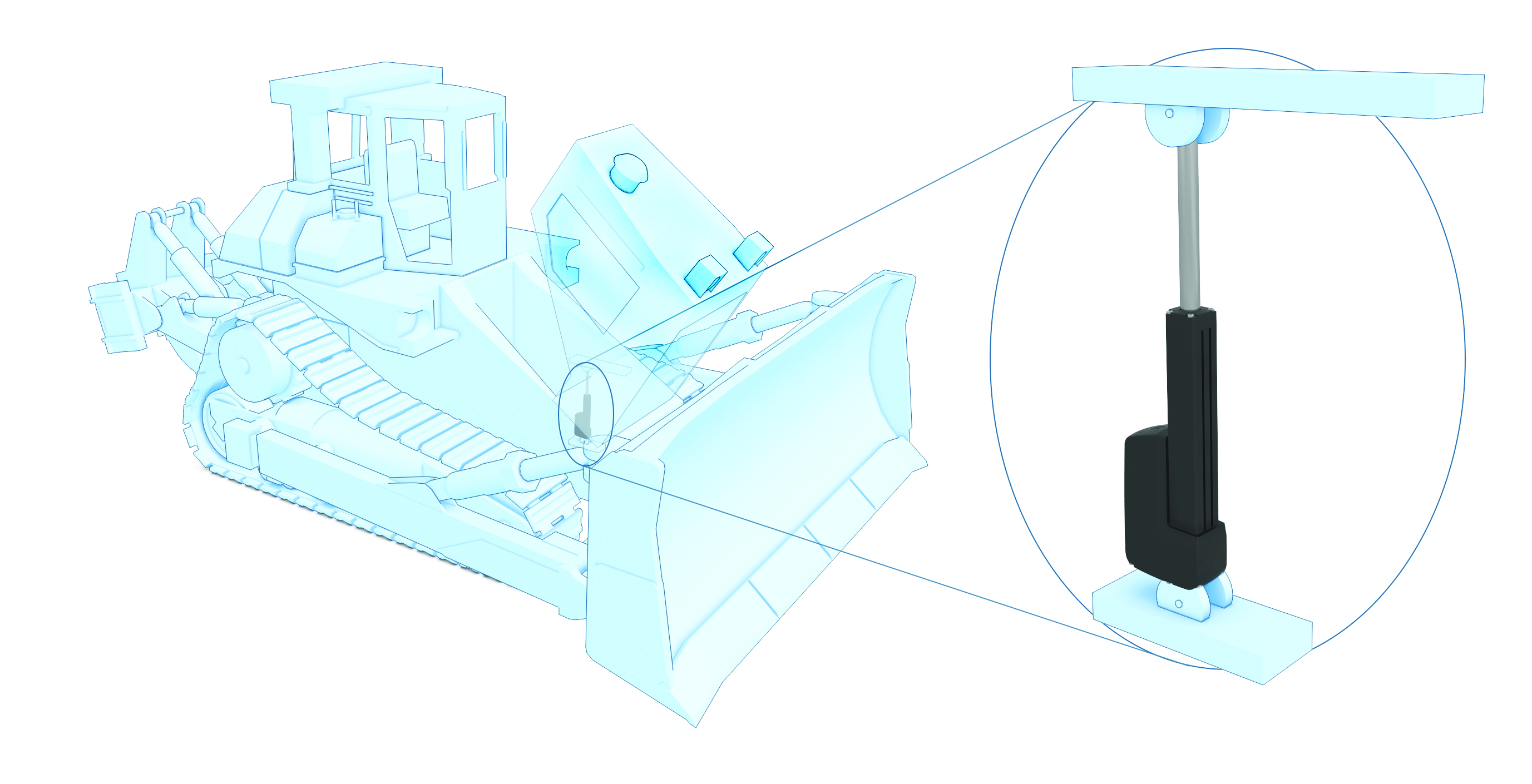
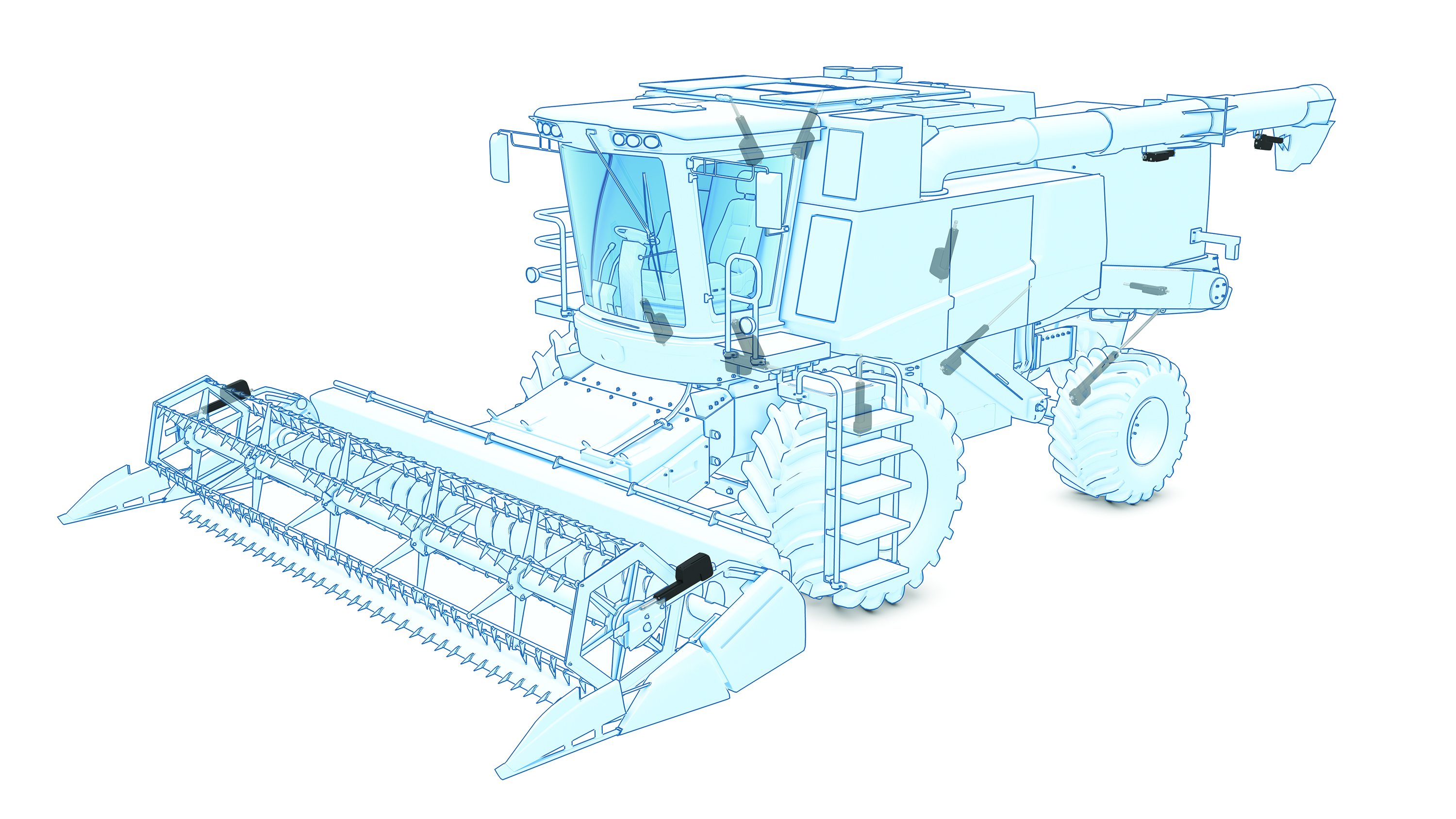
Due to their safe and strong design, electromechanical actuators are frequently used in mobile off-highway machines
Factor Three: Sealing strategies
After materials and coatings, the next line of defense in harsh environments is the sealing strategy. Unless a component is adequately sealed, chemicals and particulates can make their way to internal component mechanisms, causing damage, buildup and clogging, and creating fertile ground for bacterial and other microbial growth. Deploying inadequately sealed motion control technology in harsh environments will require additional cost of enclosures and maintenance, and potentially more frequent maintenance.
Every component should be sealed, including motor mounts. Wipers, seals and gaskets are integral to success. The wiper brushes off contaminants from the extension tube during operation and prevents water intrusion. The seals back up the wipers to complete the protection. Gaskets provide sealing between housings, cover tubes, motors and rear mounting components.
One of the best indicators of a system’s sealing effectiveness is International Protection Marking, or IP Code. Its ingress protection (IP) rating is the global standard for measuring protection from the ingress of solid objects and liquids. The IP rating specifies the degree of environmental protection an enclosure provides against foreign materials that could impact performance.
The IP rating is composed of two numbers (Table 1). The first number represents resistance to solids and the second to liquids. An IP rating of 00, for example, means there is no protection from solids or liquids. An IP rating of 11 means protection from ingress by objects larger than 50mm and from rain or condensation. An IP rating of 66 means protection from penetration by particulates the size of dust and from high-pressure water jets from any direction. This is considered the minimum for use in harsh environments today.
|
First Digit: |
Second digit: Ingress of liquids |
|
| 0 | No Protection | No Protection |
| 1 | Protected against solid objects over 50mm (e.g. hands, large tools). | Protected against vertically falling drops of water or condensation. |
| 2 | Protected against solid objects over 12.5mm (e.g. hands, large tools). | Protected against falling drops of water if the case is disposed up to 15° from vertical. |
| 3 | Protected against solid objects over 2.5mm (e.g. wire, small tools). | Protected against sprays of water from any direction, even if the case is disposed up to 60° from vertical. |
| 4 | Protected against solid objects over 1.0mm (e.g. wires). | Protected against splash water from any direction. |
| 5 | Limited protection against dust ingress (no harmful deposit). | Protected against low-pressure water jets from any direction. Limited ingress permitted. |
| 6 | Totally protected against dust ingress. | Protected against high-pressure water jets from any direction. Limited ingress permitted. |
| 7 | N/A | Protected against short periods of immersion in water. |
| 8 | N/A | Protected against long, durable periods of immersion in water. |
| 9K | N/A | Protected against close-range, high-pressure, high-temperature spray down |
Table 1: Degrees of Protection by Enclosures (International Electrotechnical Commission [IEC] 60529).
Factor Four: Vibration and Shock Resistance
Materials, coatings and sealing may be compromised by shock and vibration. Components must be tough enough to withstand the extremes of machines operating in harsh conditions. Often this translates into heavy loads or intense vibration or forces acting on the components – sometimes in near constant operation. The constant torque and movement can weaken a component over time and cause failure. By incorporating design features that account for high vibration or shock load, manufacturers eliminate the need for product accommodations.
Planetary gear designs provide more shock resistance than parallel gearing, and stiffness can be improved further by cutting one of the internal gears directly into the output housing. Leveraging a single-piece housing and ring gear, in this way, eliminates the chance of the gear slipping inside the housing, offering higher peak torque. Avoiding bushings with rolling elements can also help systems handle the constant stress environments as can depth/through case hardening of shafting. Proper mating of all components is also critical to shock protection.
Testing shock resistance
Compliance with industry standards is one of the best ways to ensure that you get the shock protection you need. Table 2 compares the three most common standards applied to motion control equipment: MIL- S -901, EN60068-2-27 and EN60068-2-32.
| Standard | Type of shock tested | Procedure |
| MIL- S -901 | Mechanical shock, originally developed for ability of warships to withstand combat shock | Varies according to type of equipment and criticality to operation of ship |
| EN60068-2-27 | Operational shock | 100 operations of 400m/s2, 6ms duration shock pulses, which should be repeated in each of 3 mutually perpendicular axes. |
| EN60068-2-32 | Drop shock | Single dropping a device onto or steel or concrete floor from a 1000mm platform in both directions of each axis, and repeating that for a minimum of six drops. |
Table 2: Standards for shock resistance
Testing vibration resistance
To ensure that common vibration profiles can be completed without damage to the product, test protocols, usually OEM specific, are run on multiple components and planes, including protocols for testing housings, structural bolts and any included printed circuit assemblies/sensors. Testing is conducted with the unit not powered or operating and mounted on a vibration machine guided by the power spectral density levels shown in Table 3. The device being tested should extend half of design maximum and be tested in three orthogonal axes for 24 hours each.
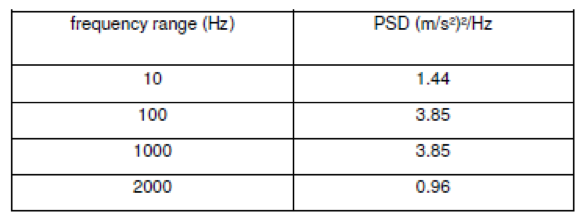
Table 3: Acceptable frequencies at various power spectral density levels
Factor Five: Maintainability
Harsh environments present risks to human safety from extreme temperatures, toxic/harsh chemicals or inhalation hazards – even radiation. Besides lost productivity and downtime, maintenance or replacement presents risk of injury or illness – especially if frequently done. Components that offer little to no maintenance improve employee safety and minimize potential for workplace accidents, while reducing costs. Lubrication issues are one of the main maintenance drivers for linear motion components. Smooth, reliable motion is a hallmark of a well-designed system and this is ensured by maintaining the proper level of lubrication for moving components. Products that use oil for lubrication require routine maintenance and are predisposed to leaks. Components that pre-lubricate with grease or self-lubricate can greatly reduce or eliminate ongoing maintenance demands. Thomson solutions for harsh environments Motion control equipment manufacturer Thomson Industries offers a wide range of products designed for operation in harsh and hazardous environments. Its Max Jac® heavy duty electric linear actuators, for example, are made of stainless steel, hard anodized aluminum or a highly resistant polymer. All seals are made of materials that withstand both organic and nonorganic chemicals and abrasive materials. They are designed to operate in a wide temperature range from -40 to plus 85°C. They are also rated for IP66/IP69K and have been tested for 500 hours of salt spray, withstand dirt, dust and water, and resist aggressive substances such as fertilizers, acid, oil, grease and cleaning agents.
Another addition to the Thomson electric linear actuator product line is the Electrak® HD, which utilizes stainless steel, e-coated zinc, and anodized aluminum materials to provide best-in-class protection in heavy duty environments. In addition, the Electrak HD introduces advanced sealing features with the added benefit of IP66 dynamic protection to keep the internal components free of ingress – even while the actuator is operating. The internal components themselves are protected from drops, shocks, and interference from other electrical sources to ensure proper operation, regardless of external application demands.
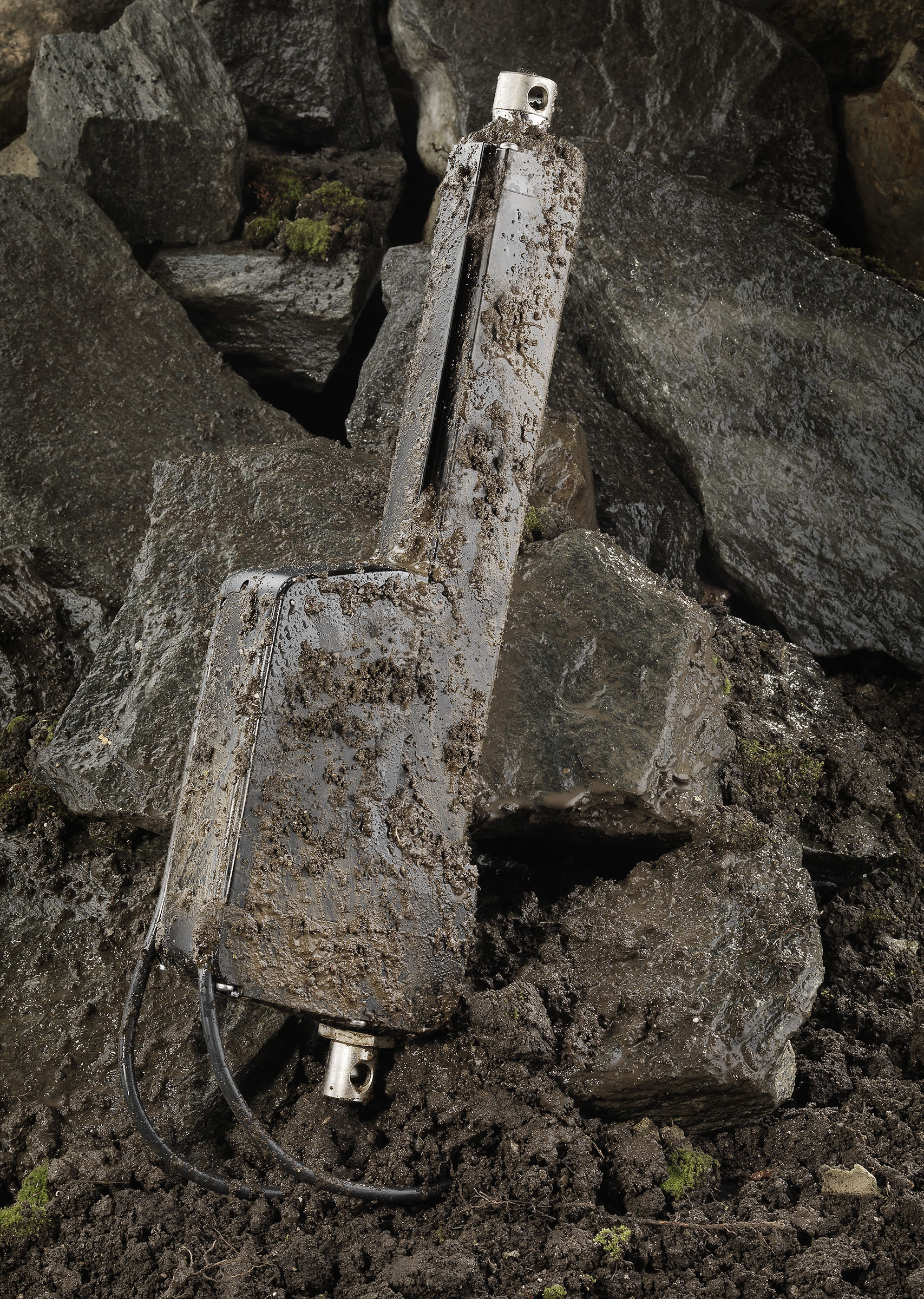
The durable coating of the actuators successfully protects their internal components
The Electrak HD product is also backed by the Thomson Test Plan, a 40-day test platform that puts the design to the test against all of the aforementioned conditions with industry standards like EN60529, DIN40050-9, EN60068-2-27, ISO 7637-2, and ISO 13766, among others.
Thomson Roundway® linear bearings are rated for temperatures higher than 82 °C / 180 °F and provide 100 % load capacity up to 204°C / 400° F with a de-rated load capacity up to 315°C / 600°F and also provide maximum resistance against high levels of contamination and radiation. Thomson “A” Ball Bushing® Bearings are available with all 440 stainless steel components to resist rust and corrosion. The all-steel construction also allows the “A” bearing to operate in high temperatures up to 600 ̊F.
Thomson AquaTRUE™ gearheads have IP66, IP67 and IP69K protection ratings, are completely stainless steel, have no external seams and can handle high-pressure washdown from all angles. These traits can save an average-sized customer more than $50K/year by eliminating additional costs of components such as enclosures, shielding or mechanical transmissions.
Thomson Micron® UltraTRUE™ helical crowned true planetary gearheads have a stainless-steel output housing and shaft and come standard with IP66, IP67 and IP69K ratings. They also cut an internal gear into the output housing for increased stiffness and shock load protection, which helps them withstand the MIL-S-901 medium weight shock test.
Thomson 60 Case® shafting is thin dense chrome plated with plain ends from stock or 100% chrome plated, black oxide, or Armoloy™ plated. And Thomson linear guides come with a variety of options for wipers, scrapers and seals that will increase resistance to debris while retaining increased levels of lubrication within the bearing itself, decreasing the potential for downtime and needs for service.
Thomson also offers web-based sizing and selection tools that simplify the task of choosing appropriate component materials for load, speed, life and so on, as well as for specific environmental conditions to be met, including water/chemical spray/fog; moderate to heavy dust-particulate count; high pressure/temperature wash down; and water/chemical splash, clean room. The application will recommend linear slide features, such as chrome plating, stainless steel components or polymer plain bearings to address the environmental conditions.
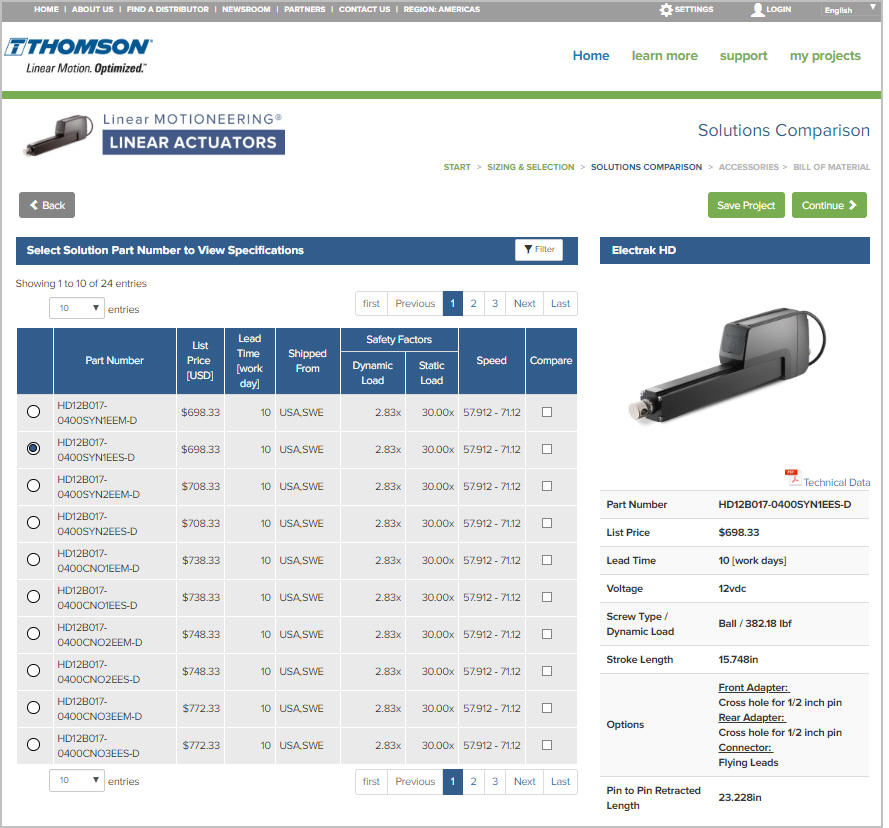
The online sizing and selection tool assists design engineers in accurately choosing a linear actuator that meets their needs
The right stuff
As long as harsh and hazardous environments require extended presence by humans, many opportunities to improve productivity will remain untapped. Motion control technology can reduce the need for human exposure, while at the same time, enabling performance of operations beyond human capability. But mechanical components require protection too, and careful consideration of materials, coatings, sealing strategies, vibration and shock resistance, and maintainability can help system designers ensure they will get maximum performance and life out of the systems they intend to deploy in challenging environments.


